The average cost of Brachytherapy in Barcelona approximately starts from USD 24000
Treatment cost
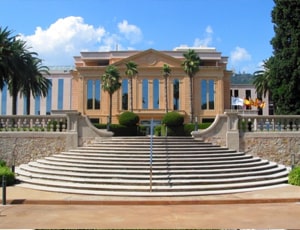
Apart from in-detail treatment procedures available, Centro Medico Teknon located in Barcelona, Spain has a wide variety of facilities available for International Patients. Some of the facilities which are provided by them are Accommodation, Airport Transfer, Choice of Meals, Interpreter, SIM, TV inside room. Also listed below are some of the most prominent infrastructural details:

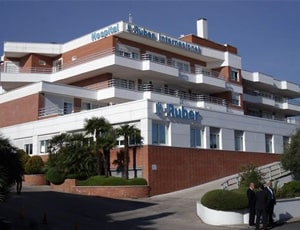
The Hospital has a wide architectural structure that consists of-
With about 80,000 m 2 , it is equipped with the highest sanitary technology and offers a wide portfolio of services-
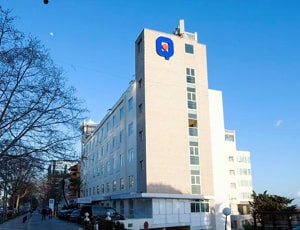
Apart from in-detail treatment procedures available, Quironsalud Marbella Hospital located in Marbella, Spain has a wide variety of facilities available for International Patients. Some of the facilities which are provided by them are Accommodation, Airport Transfer, Choice of Meals, Interpreter, SIM, TV inside room. Also listed below are some of the most prominent infrastructural details:
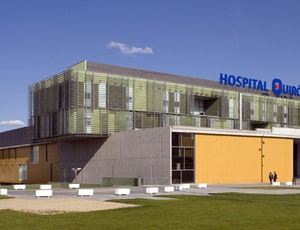
Apart from in-detail treatment procedures available, University Hospital Quironsalud Madrid located in Madrid, Spain has a wide variety of facilities available for International Patients. Some of the facilities which are provided by them are Accommodation, Airport Transfer, Choice of Meals, Interpreter, SIM, TV inside room. Also listed below are some of the most prominent infrastructural details:
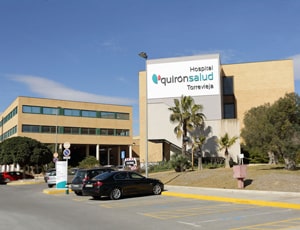
Quironsalud Torrevieja Hospital located in Torrevieja (Alicante), Spain is accredited by ISO. Also listed below are some of the most prominent infrastructural details:
Brachytherapy is an advanced form of radiation therapy. It is also known as internal radiation therapy. Radiation therapy is a type of cancer treatment in which ionizing radiation is used to destroy cancer cells and shrink the size of the tumors. The conventional form of radiation therapy is external beam radiation that projects radiation from a machine outside of the body. In case of internal radiation or brachytherapy, radioactive particles or sources that are internally placed in or next to the tumour site, are used to destroy cancer cells. Brachytherapy helps deliver a high radiation dose to the tumor, with minimal exposure to the surrounding healthy tissues.It thus allows delivering high doses of radiation to more-specific areas of the body.
Brachytherapy can be used for effective treatment of cervical, prostate, breast, skin, lung, head and neck, and gum cancer, in addition to tumors located in other parts of the body. Brachytherapy for prostate cancer is a commonly performed procedure. It is also used for the treatment of gum cancer as well. Brachytherapy is an alternative treatment for gum cancer and is conducted who are unfit to undergo a surgery or do not need one.
Brachytherapy can be completed in less time than other conventional radiotherapy techniques. Brachytherapy for prostate cancer and other cancers is often performed on an outpatient basis and patients typically have to take fewer brachytherapy sessions, as compared to external radiotherapy treatment for cancer. This makes brachytherapy more accessible and convenient to many patients. Most of the patients are able to tolerate brachytherapy very well with fewer side effects.
There are two types of brachytherapy treatment:
Brachytherapy treatment plan is created and governed by a radiation oncologist, who is a highly trained physician specializing in treating cancer with radiotherapy. The radiation oncologist will require a team, including a medical physicist, dosimetrist, radiation therapist, radiation therapy nurse and in some cases, a surgeon to conduct the procedure. However, the radiation oncologist is the one who evaluates the patient and determines the appropriate therapy, including how much radiation to deliver.
In permanent brachytherapy, needles that are pre-filled with the radioactive brachytherapy seeds are inserted into the tumor. Then the needle or device is removed, leaving the radioactive seeds behind. Sometimes these seeds may be implanted in sessions using a device that inserts them individually at regular intervals. An appropriate imaging means such as an ultrasound, X-ray, MRI or CT scan may be used to assist the physician in positioning brachytherapy seeds at the right place. After implantation, some additional imaging can be done to verify seed placement.
Temporary brachytherapy starts with placing a delivery device, such as a catheter, needle, or applicator, into the tumor. Methods of imaging such as an ultrasound, MRI, or CT scan will help position the radiation sources correctly. The delivery device can either be inserted into a body cavity such as vagina (intracavitary brachytherapy) or applicators such as needles or catheters can be inserted into body tissues (interstitial brachytherapy). Device implantation will depend on the location of cancer.
Radiation using brachytherapy procedure can be delivered at three different levels:
For patients who have received brachytherapy for prostate cancer or any other types of cancer, limiting physical activity for at least three to five days is important. You can experience some level of grogginess after the procedure, however, it will last for only a few hours. You will be prescribed a few emergency medicines that you can take in case you experience pain or any other type of discomfort.
There are some side effects associated with all kinds of radiation therapy. However, the acute, sub-acute, or long-term side effects of brachytherapy depend on the location of the tumor being treated and the type of brachytherapy being used.
Some acute side effects of brachytherapy are
But these are temporary side effects and usually resolve within a few days following completion of treatment.
Usually, brachytherapy does not cause any long-term side effects, but in a few cases, it may cause urinary and digestive problems. But in that case as well, long-term side effects are usually mild or moderate in nature and there are many palliative medicines that are available to cope with the symptoms.
Ask your healthcare adviser for the best multiple options and choose the one that meets your expectations
The cost of Brachytherapy procedure starts from $24000 in Barcelona. JCI, OHSAS are just some of the accreditations which top hospitals in Barcelona hold where a Brachytherapy is conducted.
Brachytherapy package cost in Barcelona has different inclusions and exclusions. The top hospitals for Brachytherapy in Barcelona covers all the expenses related to the pre-surgery investigations of the candidate. Typically, the package cost of Brachytherapy in Barcelona includes the expenses related to the surgeon's fee, anesthesia, hospital, meals, nursing and ICU stay. Stay outside the package duration, port-operative complications and diagnosis of a new condition may further increase the Brachytherapy cost in Barcelona.
Many hospitals in Barcelona perform Brachytherapy. Some of the most renowned hospitals for Brachytherapy in Barcelona include the following:
After Brachytherapy in Barcelona, the patient is supposed to stay in guest house for another 20 days. This time frame is important to ensure that the surgery was successful and the patient is fit to fly back.
Barcelona is undoubtedly one of the best cities for Brachytherapy in the world. It offers the best medical expertise and good patient experience at an affordable cost. However, there are other cities as mentioned below that are popular for Brachytherapy as well:
Apart from the cost of Brachytherapy, the patient is also required to pay additionally for daily meals and guest house accommodation. These are the charges for daily meals and accommodation outside the hospital. The per day cost in this case may range from 45 USD.
The patient is supposed to stay at the hospital for about 1 Days after Brachytherapy surgery for monitoring and care. The doctors team review the patient's recovery during this time with the help of blood tests and imaging scans. Once they feel that everything is on track, the patient is discharged.
There are about 1 Hospitals in Barcelona that offer Brachytherapy to international patients. These hospitals have the required expertise as well as infrastructure available to handly patients who need Brachytherapy. These hospitals comply with all the rules and regulations as dictated by the regulatory bodies and medical association in Barcelona
Some of the most sought after doctors for Brachytherapy in Barcelona are:
Barcelona, a city in Spain has now become a popular destination for medical travelers owing to its reliable and high-quality healthcare system. The city has around 58 hospitals, out of which 12 are public and 46 are private. These hospitals provide outstanding non-elective and elective treatments. They have some of the best doctors in the country and are equipped with the latest medical technology. Some of the hospitals in Barcelona have also earned recognition from international organizations such as JCI. It is easy for foreign patients to avail treatments from Barcelona’s hospitals as most of these facilities have translation services. The medical staff is also fluent in languages such as English. The most common healthcare services obtained by international travelers in Barcelona are dental implants, cosmetic and plastic surgery, teeth whitening, in-vitro fertilization, artificial insemination, and weight loss surgery.
Due to the excellent healthcare delivered, several hospitals in Barcelona have received JCI accreditation. The hospitals provide a range of healthcare services in various disciplines and are staffed with expert doctors and physicians. Some of the top hospitals in Barcelona are:
Barcelona has a pool of exceptional doctors with substantial experience in their field. Some of the top doctors in Barcelona are:
You can reach Barcelona by any type of transportation whether plane, train or car. If you wish to travel to Barcelona for your medical treatment then we can provide assistance in planning your medical travel so that you get the best care.